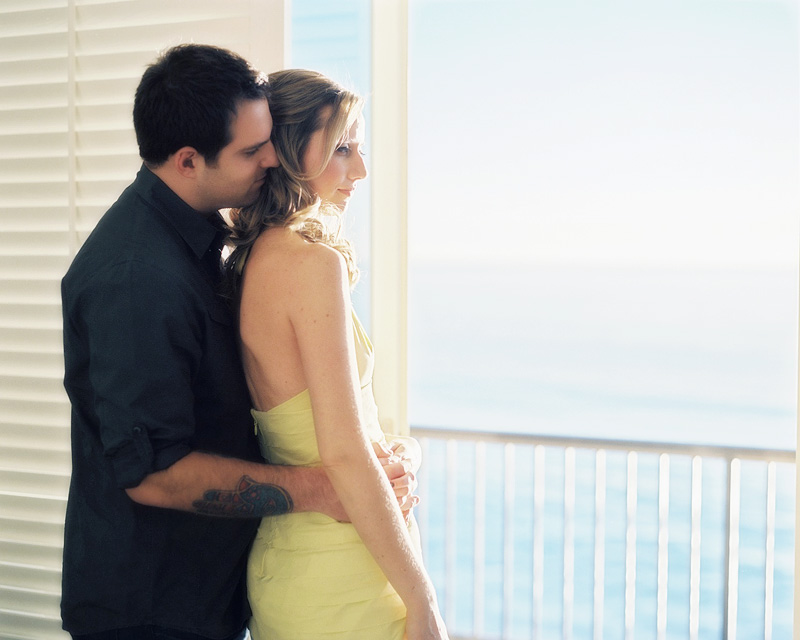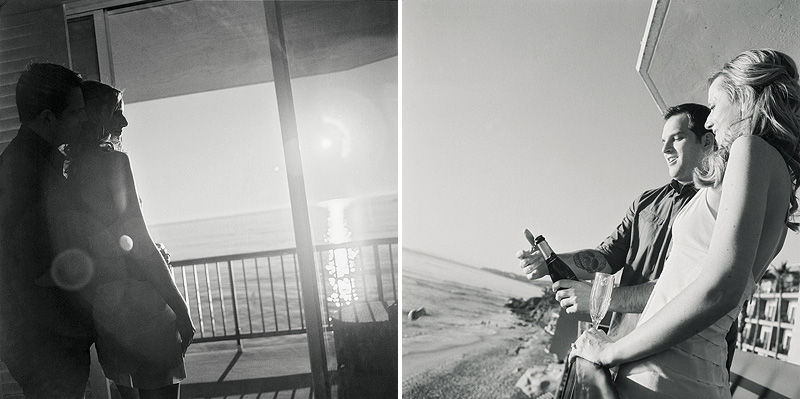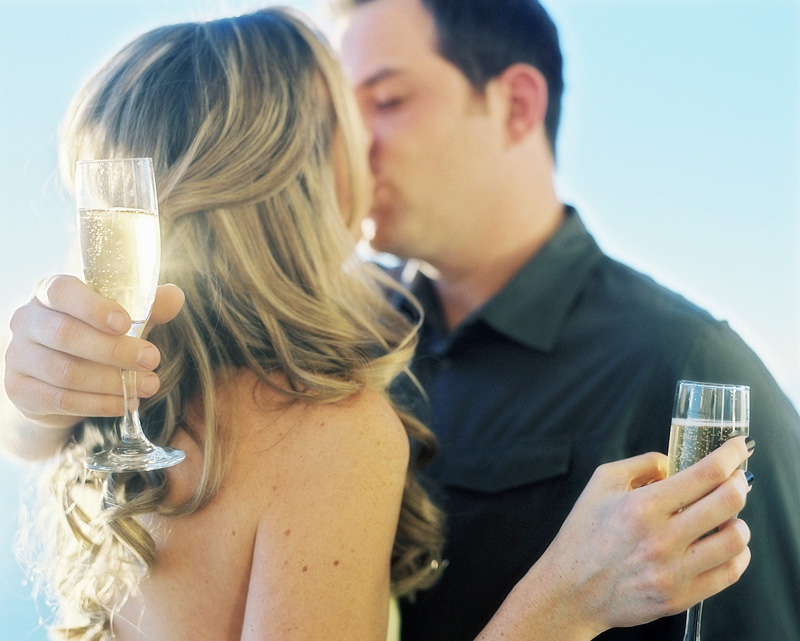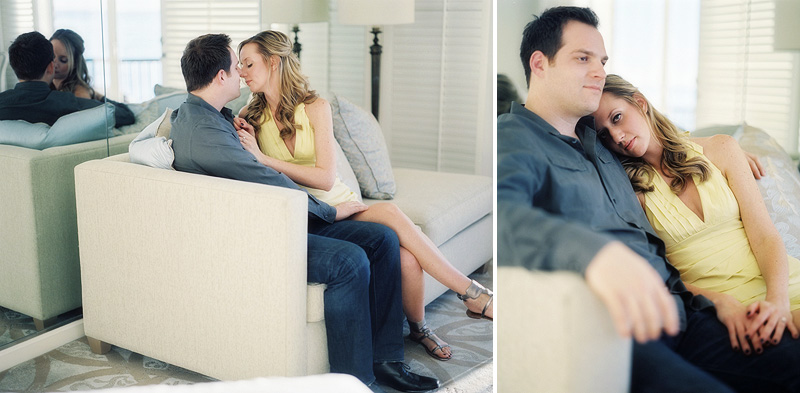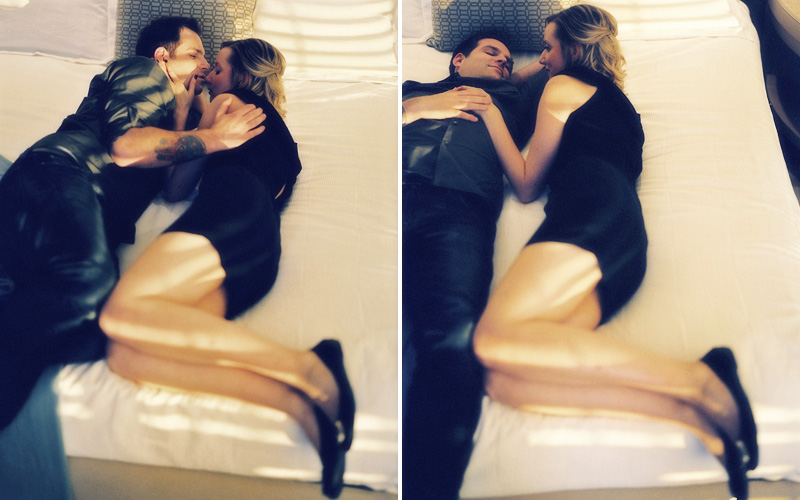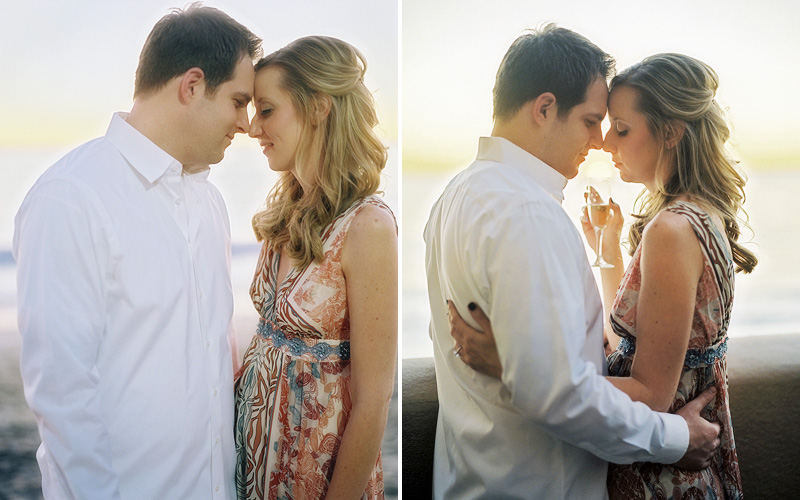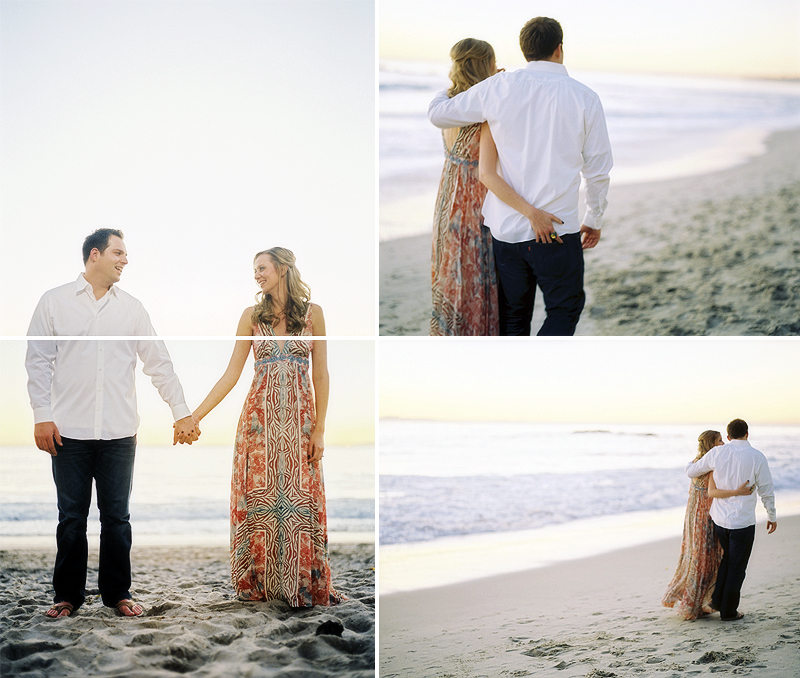skip to main |
skip to sidebar
After doing our last digital vs. film test we received several questions from followers wondering why we didn't compare a full frame digital capture to 35mm film or 645 film to a $30K digital back. The simple answer was that we were simply comparing the capture mediums, not cameras. The easiest way to do that was to use smaller format pro-sumer cameras. At the time many enthusiasts and "Professional" photographers were still shooting the D300 and other cameras like it (I still think the smaller sensor size has an advantage when shooting telephoto zooms). For those pro photographers shooting 6cm film that went digital, most have opted for, or later upgraded to, a full frame sensor. But the medium format backs have been predominantly (due to numerous practicalities) reserved for 4x5 and studio shooters. In context, the 645 format is really a relatively small format for film. The largest you can go with a great digital back is about 6x4.5 but with film you can go all the way up to 8x10 or even larger. The smallest serious digital format is M4/3, but with film 35mm is lowest quality available. There was also the price gap between a Nikon F3 and a Canon 5D Mark II. Not even in the same ballpark. In the end we felt we chose two easily accessible formats to compare.
It would seem a fair assessment, that digital sensor sizes scaled to film sensor sizes, tend to line up in accessibility, application and functionality of each medium pretty accurately...
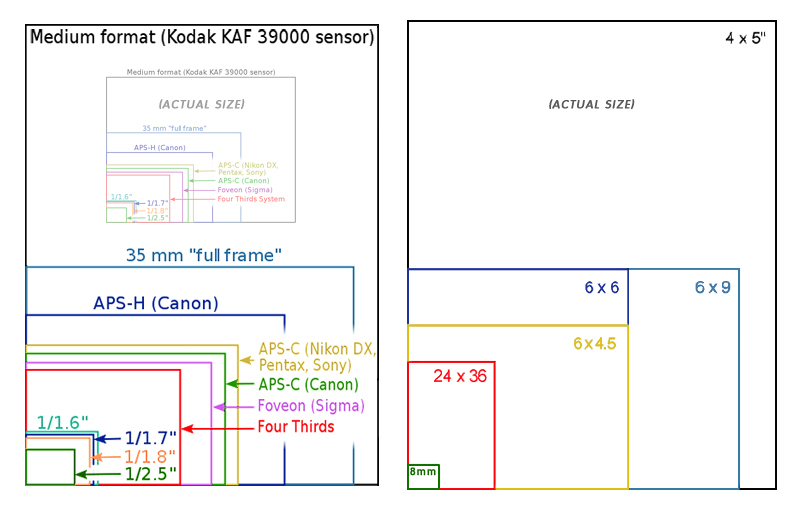
That being said, recently we talked a friend into letting us borrow her 5D Mark II and we decided to do the test all digital photographers really wanted to see... Full frame digital vs. full frame 35mm film! So here it is!
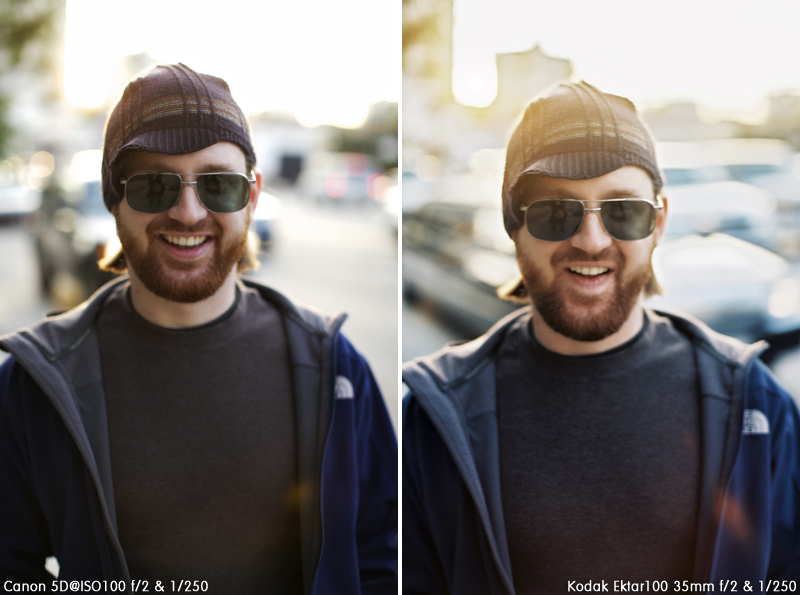
Above you can see Matt really enjoying having us point our cameras at him. :) Thanks Matt! On the left is the Cannon EOS 5D Mark II with a 50mm f/1.2 L shot RAW at ISO 100 and on the right our little Nikon FE2 with a 50mm f/1.2 AI-S loaded with Kodak Ektar 100. Both were exposed identically metering for Matt's face. The digital was edited in Aperture to maintain optimal latitude, color and contrast. The film is a straight scan made on our Fuji Frontier SP-2500. The output at 300 DPI is 10 inches in width (conservatively 14MP), so we scaled in a little on the negative when scanning to match the 21MP (about 12 in.) resolution of the 5D.
There are some definite differences in the overall look of the two images. I love the color of the Ektar! Skin looks great! The digital appears to fall just shy of the highlight detail of the film. Detail is definitely lost in the background but the transitions look much better than other digital cameras. The Ektar is a very contrasty negative stock but it still performs rather well under intense lighting.
Next, exposure forgiveness... The series below were shot underexposed 2 stops, then normal exposure, and finally over 2 stops. (Digital hates it when we do that!)
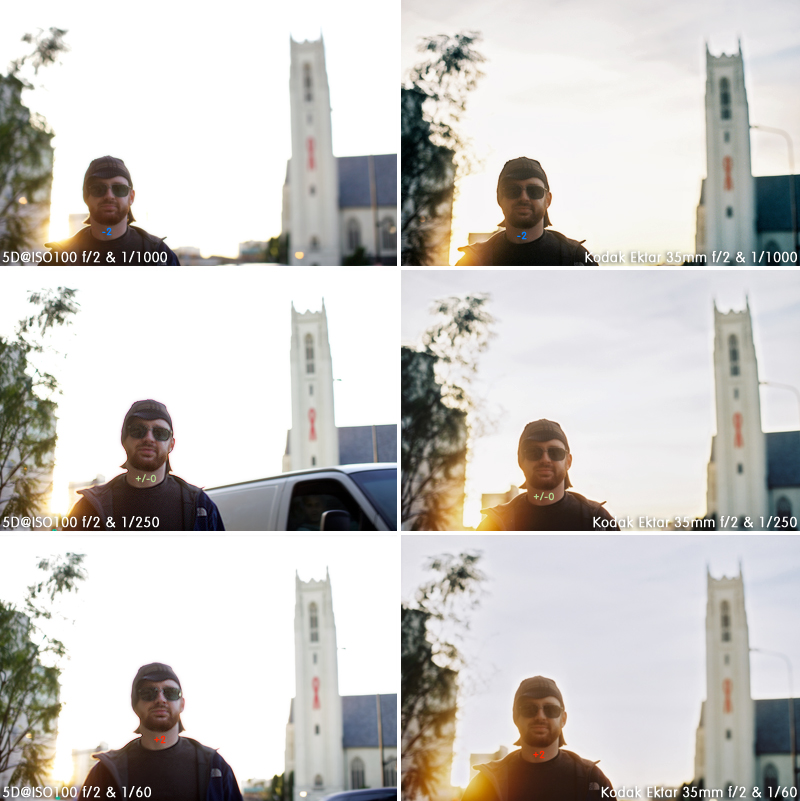
No too surprising. Pretty self explanatory. The Raw files really handled the over and underexposure well in the soft light, but had little to offer in way of highlight detail in the sky even when underexposed 2 stops. The tree and the building above Matt's right shoulder are totally destroyed by the sun on digital, whereas on film, all the detail is retained in every exposure. Now take a look at the detail pixel for pixel.

On the right, film does really well with the harsh back light. The 5D has digital's signature neon glow. I could have spent time reducing noise and fringing but this is a capture test, not a digital post test. In regards to grain vs. noise, these two seem to go toe to toe and I'm sure everyone who sees this will have a different opinion on which is better so I'm going to stay out of it. The film grain appears a little larger but the film has no interpolation so therefore finer resolution. I will say that the beauty of film is that you can get 5X the resolution just by upgrading to a Mamiya C330 and Ektar in 120 and little to no cost! Not available for the Canon. You have to invest in a $30K digital back and a brand new camera! Either way, grain and noise this size would not be visible on any print under 16x20. What would be visible in a print would be the spectral highlights and interpolation you see around Matt's head where the highlights blowout on the digital shot. In our experience, film always looks better printed whereas digital tends to fall apart when you print it due to the aforementioned and the fact that gradients and color ranges that look great on your screen don't always look great in the print.
In the end I was actually blown away how good the 5D Mark II actually did! I have nothing but good things to say about this camera. I still love our film but later that night when we pushed some Kodak Vision 3 500T 3 stops to 3200 to compare to the Cannon's 3200 setting I was amazed at the performance.


These shots are straight out of camera! The 5D has a little built in color noise reduction and sharpening in camera but I didn't do anything about the noise in post. The 5D Mark II is just that good at ISO 3200! The 500T is amazing for being pushed 3 full stops in developing but didn't turn out to be true 3200. Maybe a halfway between ISO 1600 and 3200 and seeing that I can underexpose 500T 2 stops in low light without pushing and still only loose a little shadow detail tells me that pushing color film only increases your mid-tone and highlight levels. You may get a little more separation by bringing some of your shadows into the mid-tone range, thus getting images that look better exposed, but in the end you are not adding information to your negative. Color film pushed is only as good as the shadow detail of your film stock. I do prefer the look of the film shot better than the digital but at the cost of some speed and resolution.
In the end, I still can't see film becoming obsolete anytime soon. There are so many great cameras and film stocks out there at truly affordable prices that there is no reason for anyone not to get into it. On the other side, digital is very expensive and time consuming. To have the current top of the line digital gear we would have to sell almost all of our film gear. And we have a lot! But if you have the cash and are good at working in RAW and love spending time editing images on your computer the Mark 2 is probably perfect for you. But I say film is beautiful! If you get good scans you really don't have to do anything to it and it will look gorgeous.
So what are you waiting for? Go out and shoot some film, take it to Richard Photo Lab and tell me you don't love it!
Added 1/26/2011...
Our friend Zach Hodges saw this post yesterday and offered to put a few of the images from the Canon 5D Mark II through his normal work flow to see if he could improve upon the initial capture quality. So we sent a few over and here is what he had to say:
"I ran three of those through my usual assembly line. I tried not to spend more than a normal amount of time on it but I suspect I may have, about 7 mins a photo. As I suspected, there was some improvement to be made, but film obviously still destroys in the DR department. The f/2 and 1/1000 one was the only one that had recoverable highlights. Fringing was pretty easy to get rid of with a few clicks and skin tone is very subjective, but I took it to where I liked it."
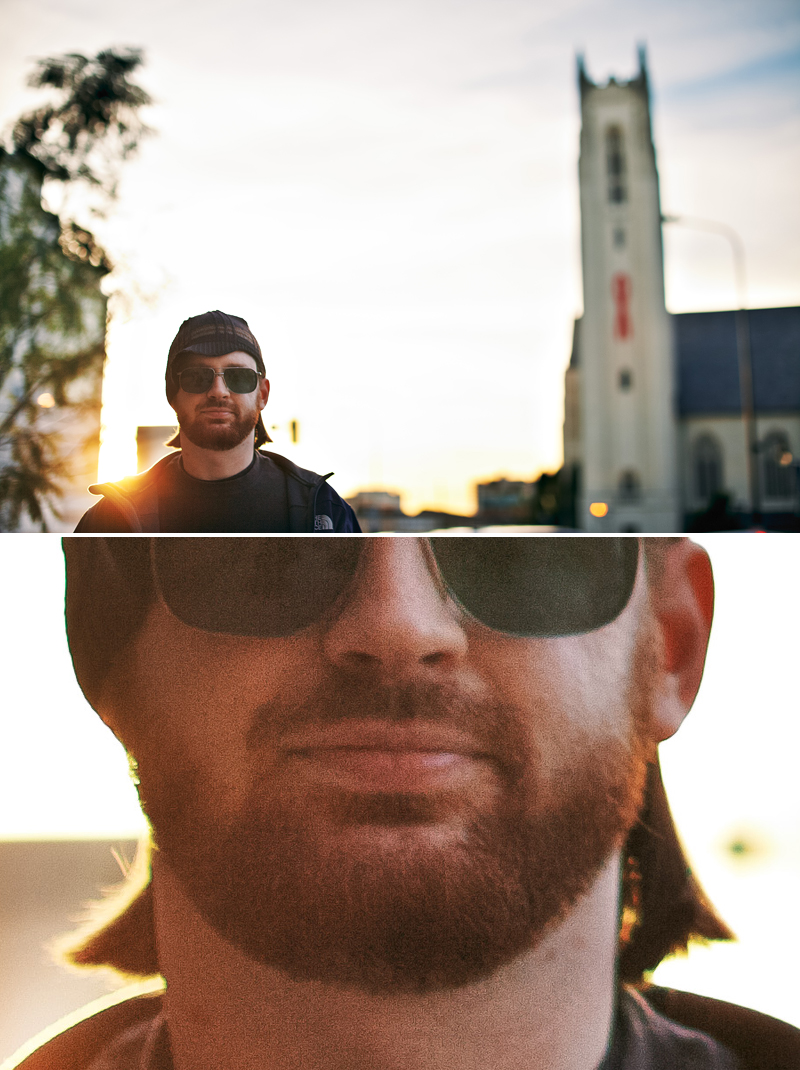
This was the same raw file from above that was exposed 2 stops under. It looks much much better! But the film shot that was exposed 4 stops more (16X brighter highlights) than this one retained just as much highlight detail with zero post. Fringing is gone and color looks a lot better! Goes to show that good postprocessing makes all the difference with digital photography. Thanks Zach! :)

